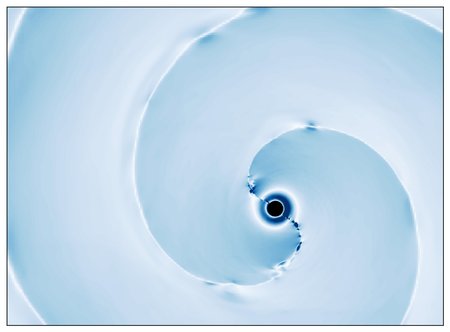The next and final lunar eclipse of 2022 will occur on Nov. 8 and will be visible in parts of Asia, Australia, North America, parts of northern and eastern Europe, and most of South America.
The first total lunar eclipse of 2022 occurred on May 15-16 and was visible in total phase from portions of the Americas, Antarctica, Europe, Africa and the East Pacific.
Lunar eclipses occur when Earth is positioned between the sun and the moon, casting a shadow across the surface of the moon. They can only occur during a full moon and make for an interesting skywatching target.
Related: Solar eclipse guide 2022: When, where & how to see them

Daisy Dobrijevic
There are three types of lunar eclipses depending on how the sun, Earth and moon are aligned at the time of the event.
- Total lunar eclipse: Earth’s shadow is cast across the entire lunar surface.
- Partial lunar eclipse: During a partial lunar eclipse, only part of the moon enters Earth’s shadow, which may look like it is taking a “bite” out of the lunar surface. Earth’s shadow will appear dark on the side of the moon facing Earth. How much of a “bite” we see depends on how the sun, Earth and moon align, according to NASA (opens in new tab).
- Penumbral lunar eclipse: The faint outer part of Earth’s shadow is cast across the lunar surface. This type of eclipse is not as dramatic as the other two and can be difficult to see.
Total lunar eclipse May 15-16
The first lunar eclipse of 2022 occurred overnight on May 15-16. Here, the full Flower Moon experienced a total lunar eclipse as the moon moved into the shadow of the Earth. The total eclipse was visible from portions of the Americas, Antarctica, Europe, Africa and the East Pacific.
A penumbral eclipse (where the edge of Earth’s shadow falls over the moon) was visible in New Zealand, eastern Europe and the Middle East.

(opens in new tab)
According to TimeandDate.com (opens in new tab), the partial eclipse phase of the moon eclipse began on May 15 at 10:28 p.m. EDT (0228 GMT on May 16). It got to the red-hued Blood Moon peak on May 16 at 12:11 a.m. EDT (0411 GMT). Then ended at 1:55 a.m. EDT (0555 GMT).
Related: Super Flower Blood Moon of 2022, longest total lunar eclipse in 33 years, wows stargazers
Total lunar eclipse Nov 7-8
Related stories:
The next lunar eclipse will happen on Nov. 8, 2022.
Exactly when the lunar eclipse will be visible depends on where you are located but TimeandDate.com says (opens in new tab) the partial eclipse phase of the moon eclipse begins Nov. 8 at 05:09 a.m. EST (0909 GMT). It will get to the red-hued Blood Moon peak on Nov. 8 at 06:19 a.m. EST (1016 GMT). Then the event ends at 07:41 a.m. EST (1141 GMT). Note the penumbral eclipse will begin about an hour earlier and end about an hour after the partial eclipse.
According to TimeandDate.com, at least some parts of the next lunar eclipse should be visible in North/East Europe, Asia, Australia, North America, most of South America, Pacific, Atlantic, Indian Ocean, Arctic and Antarctica.
To find out if the next total lunar eclipse (Nov. 8) is visible from your location check out this interactive map from TimeandDate.com (opens in new tab).
If you’re clouded out or unable to see the event in person, there will be several livestreams of the lunar eclipse including this one from TimeandDate.com which is available on their website (opens in new tab) and YouTube channel (opens in new tab). It plans to broadcast the entire event from its mobile observatory in Roswell, New Mexico and take live feeds from San Diego, California and from Perth in Western Australia. The broadcast is scheduled to start at 4:00 a.m. EST (0800 GMT).
More livestreams from around the world are mentioned in our Beaver Blood Moon 2022 lunar eclipse guide which tells you everything you need to know about the final lunar eclipse of the year, including where, when and how you can see it.
How to see a lunar eclipse
Lunar eclipses are among the easiest skywatching events to observe.
To watch one, you simply go out, look up and enjoy. You don’t need a telescope or any other special equipment. However, binoculars or a small telescope will bring out details on the lunar surface — moonwatching is as interesting during an eclipse as it is at any other time. If the eclipse occurs during winter, bundle up if you plan to be out for the duration — an eclipse can take a couple of hours to unfold. Bring warm drinks and blankets or chairs for comfort.
If you hope to snap a photo of a lunar eclipse, here’s our guide on How to photograph a lunar eclipse with a camera. And if you need imaging equipment, our best cameras for astrophotography and best lenses for astrophotography have recommendations to make sure you’re ready for the next eclipse.

(opens in new tab)
Upcoming lunar eclipses
After the Nov. 8 eclipse, we will not experience another total lunar eclipse until Mar. 14, 2025. There will however be partial and penumbral lunar eclipses to keep us occupied in the meantime.
Upcoming lunar eclipses according to NASA (opens in new tab):
| Year | Date | Type of eclipse | Visible locations |
|---|---|---|---|
| 2022 | Nov. 8 | Total | Asia, Australia, Pacific, Americas |
| 2023 | May. 5 | Penumbral | Africa, Asia, Australia |
| 2023 | Oct. 28 | Partial | E. Americas, Europe, Africa, Asia, Australia |
| 2024 | Mar. 25 | Penumbral | Americas |
| 2024 | Sept. 18 | Partial | Americas, Europe, Africa |
| 2025 | Mar. 14 | Total | Pacific, Americas, W. Europe, W. Africa |
| 2025 | Sept. 7 | Total | Europe, Africa, Asia, Australia |
| 2026 | Mar. 3 | Total | E. Asia, Australia, Pacific, Americas |
| 2026 | Aug. 28 | Partial | E. Pacific, Americas Europe, Africa |
Editor’s note: If you capture an amazing photo of a lunar eclipse and would like to share it with Space.com for a story or gallery, send images and comments to managing editor Tariq Malik at spacephotos@space.com (opens in new tab).
Additional resources
Want more information on the lunar eclipses of 2022? NASA’s total lunar eclipse of May 16 guide (opens in new tab) and the Nov 8 guide (opens in new tab) has further details on eclipse durations and viewing opportunities.
Bibliography
Espenak, F. Full Moon at Perigee (Full Supermoon): 2001 to 2100. Astro Pixels (opens in new tab). Retrieved May 9, 2022.
NASA. Lunar Eclipse Page. NASA. Retrieved May 9 (opens in new tab), 2022.
May 15–16, 2022 Total Lunar Eclipse (blood moon). Time and Date (opens in new tab). Retrieved May 9, 2022.
November 7–8, 2022 total Lunar Eclipse (blood moon). Time and Date (opens in new tab). Retrieved May 9, 2022.


